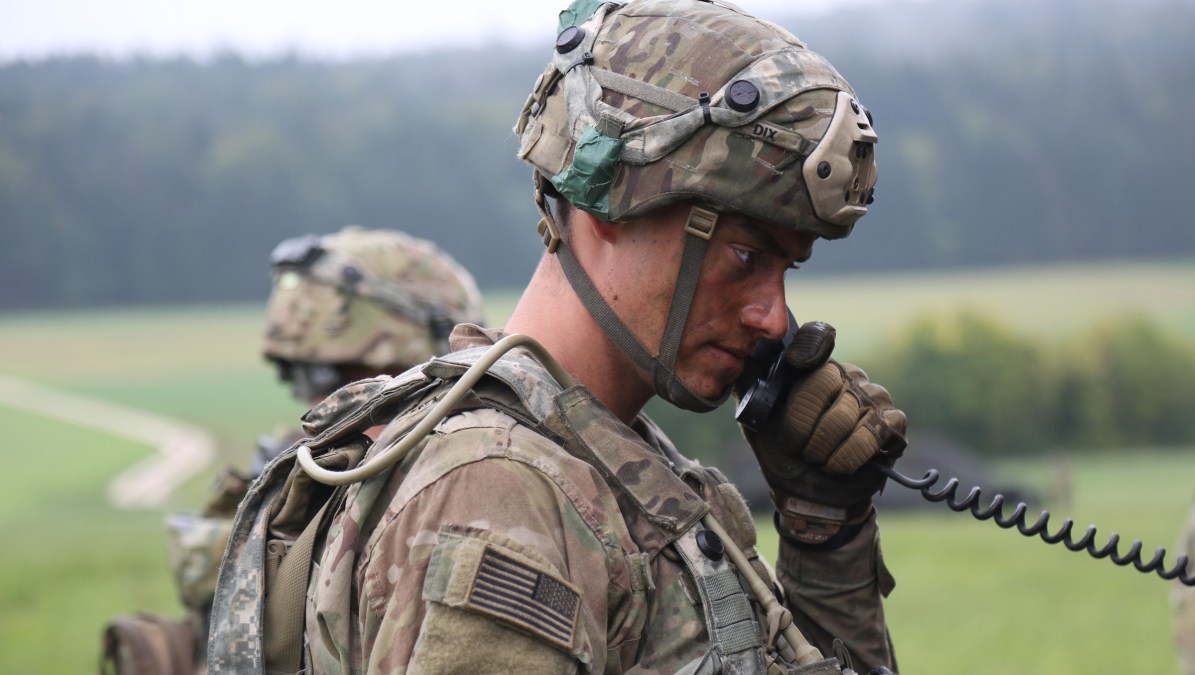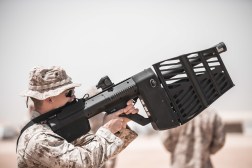Ukraine-Russia war teaching US military a lesson about secure communications

The ongoing war in Ukraine is teaching the U.S. Army a lesson about the need for secure battlefield communication and the potential for soldiers to undermine it.
Russian troops there have reportedly been using unencrypted devices, including their personal cell phones, to talk to other units and people back home. That has made them vulnerable to Ukrainian forces who can eavesdrop on what they’re saying and pinpoint their locations.
“We are very much looking every single day in real time at what’s happening in Ukraine and what we’re seeing with the Russian military, and trying to glean as many lessons learned as we can for what we think that means for the Army in the future. And I think there are a couple of lessons that really leap out,” Secretary of the Army Christine Wormuth said Tuesday during an event hosted by the Atlantic Council think tank.
That includes “the importance of secure communications and the consequences of when soldiers use their cell phones, whether it’s because that’s just everyone is used to using cell phones, or because secure communication systems and radios are not working,” she said.
“When soldiers use unencrypted comms that makes them targetable. And I think, you know, we’re going to have to think about that,” she added. “Certainly, most of our young soldiers are used to having their phones with them everywhere they go. But more broadly, I think it speaks to the fact that we’re going to have to look at how can we reduce our signatures — the signatures of our formations on the battlefield — as much as possible because the battlefield of the future will be highly transparent.”
The conflict has also highlighted the growing threat of drones, she noted.
Ukrainian and Russian forces have been using unmanned aerial systems to locate and attack their opponents. The United States has supplied loitering munitions and other UAS to help Ukraine do just that.
Air-and-missile defense is a top modernization priority for the Army, Wormuth noted, and the service is also the Pentagon’s executive agent for counter-small UAS modernization efforts.
“Drones and other unmanned systems are going to prove significant challenges for us,” she said. “We’re working hard on this but there’s quite a bit more work to do.”
Meanwhile, the Department of Defense has been providing a variety of other critical weapons to Ukraine, including anti-aircraft weapons and anti-armor missiles. That has contributed to Russian logistics challenges, which slowed their advance toward Kiev in the early stages of the war.
Wormuth said the U.S. military is better prepared than Russia’s in this regard, but there are still concerns, especially when it comes to potentially fighting China in the Indo-Pacific.
The Pentagon views Beijing’s military — not Moscow’s — as its top threat. The People’s Liberation Army has a variety of long-range missiles and other so-called anti-access weapons that it could employ against U.S. logistics nodes and platforms.
“Everything we’re seeing right now in Ukraine certainly underscores that you can be the best equipped military in the world but if you can’t sustain your forces, it doesn’t matter. And the Russians have displayed a notable and somewhat surprising deficiency in this area. But I think you know this is also a strength for the U.S. Army. But nevertheless, given the distances that would be involved in the Indo-Pacific, I think it underscores that we have really got to focus on how do we provide logistics effectively in a contested environment like the one we know we would face in the future,” she said.
The Army is investing in more modernized watercraft that could move supplies and personnel around the Pacific, she noted.
Meanwhile, the DOD wants to buy more munitions to replenish its stockpiles that have been drawn down as part of the security assistance packages that the Biden administration has committed to Ukraine. The Pentagon also wants to buy next-generation systems.
“Everything we’re seeing in Ukraine underscores the importance of maintaining our industrial base and our munitions stockpiles. Again, munitions are going to be very important in the future, particularly if we get into a protracted conflict. We’ve just signed contracts with a couple of our major industry partners to begin replenishing our stocks of Javelins and Stingers. And we’re also talking with industry more broadly about, you know, what can we do to think about stockpiling some of the longer lead items that we may have in some of our critical munitions in the future,” Wormuth said.
However, a military’s fighting ability isn’t solely determined by technology — it also depends on leadership, training and discipline. In that regard, the United States has a “very significant” competitive advantage over countries like Russia, particularly when it comes to America’s non-commissioned officer corps, Wormuth said.






